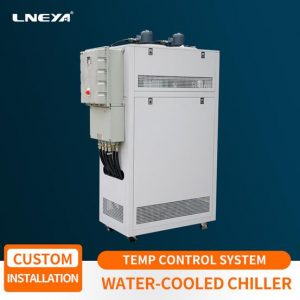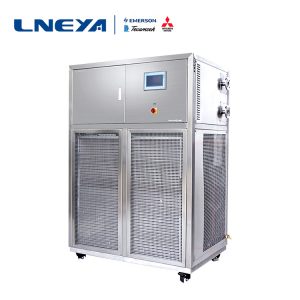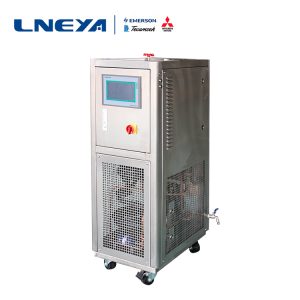The ethylene glycol chiller solution is too cold and too hot
When the ethylene glycol chiller solution
is overheated and overcooled during operation, if you don’t understand these
conditions well, you will not be able to operate the equipment well.
The supercooling phenomenon of the solution
of the glycol chiller refers to the condensed saturated liquid is re-cooled by
a certain device and method, so that the temperature is lower than the
saturation temperature under the condensing pressure. -The occurrence of
subcooling can reduce the flash gas generated by the refrigerant liquid in the
throttling process, reduce the specific volume of the flash gas, increase the
unit refrigeration capacity, and increase the superheat of the return gas,
which protects the compressor Wet stroke operation has certain advantages.
The overheating of the ethylene glycol
chiller solution refers to the difference between the saturation temperature
and the saturation temperature after overheating, which is called the degree of
superheat. The method of measuring the degree of superheat is to measure the
evaporation pressure as close as possible to the temperature sensor bulb,
convert the reading to temperature, and then subtract the temperature from the
actual temperature measured at the temperature sensor bulb. The degree of overheating
should be between 5-8°C. A high degree of superheat will cause the compressor discharge
temperature (discharge superheat) to increase, and the compressor’s operating
conditions will deteriorate and its service life will be reduced. Therefore,
the degree of inhalation superheat should be controlled within a certain range.
Due to the length and thermal insulation of
the solution return pipe (suction pipe) of the glycol chiller, the steam in the
pipe is transferred to the outside and heated. This phenomenon is called
“inhalation overheating” or “pipe overheating”. This kind
of overheating will increase the suction temperature of the compressor and
increase the specific volume of the suction steam, resulting in a decrease in
the refrigeration capacity per unit volume and a decrease in the refrigeration
capacity of the compressor. This is detrimental to the refrigeration cycle.
This problem is called “Harmful overheating.” Therefore, shorten the
length of the suction pipe as much as possible to reduce this harmful
overheating.
In some fluorine refrigeration systems that
use expansion valves, the degree of superheat is used to adjust the degree of
opening of the thermal expansion valve. This phenomenon is called
“beneficial overheating.” Similarly, the superheat generated by the
fluorine steam after reheating is also a beneficial superheat.
If the ethylene glycol chiller solution is
too cold or too hot, there are certain beneficial or harmful places. Please pay
attention to understand when you use it.
Похожие рекомендации
-
Контроль температуры для раствора для очистки пластин в полупроводниковой промышленности
1963С быстрым развитием полупроводниковых технологий требования к пластинам становятся все выше и выше, что делает чистые поверхности пластин все более важными для производства полупроводниковых устройств. В процессе производства пластин...
Посмотреть детали -
For emergencies of the water-cooled chiller of the automatic temperature control system of the react
1373In the pharmaceutical and chemicalproduction, the automatic temperature control system of the reactor is widelyvisible. In order to ensure the safe production of the enterprise, what shouldusers pay attention to when facing unexpected situation...
Посмотреть детали -
Дроссельный компонент полупроводниковой платформы управления температурой с водяным охлаждением
1817Дроссельный компонент полупроводниковой платформы управления температурой с водяным охлаждением - один из четырех основных компонентов, без которых не обходится холодильная система. Его функция заключается в снижении давления жидкости высокого давления...
Посмотреть детали -
Semiconductor laser automatic temperature control equipment accessories fault solution
1800Semiconductor laser automatic temperature control compressor frosting, may be circulating water circulation or valve is not open, check the water valve, all pipelines, to ensure smooth, install short-circuit pipeline. It may be that the circulatin...
Посмотреть детали
 LNEYA Промышленные чиллеры Производитель Поставщик
LNEYA Промышленные чиллеры Производитель Поставщик














